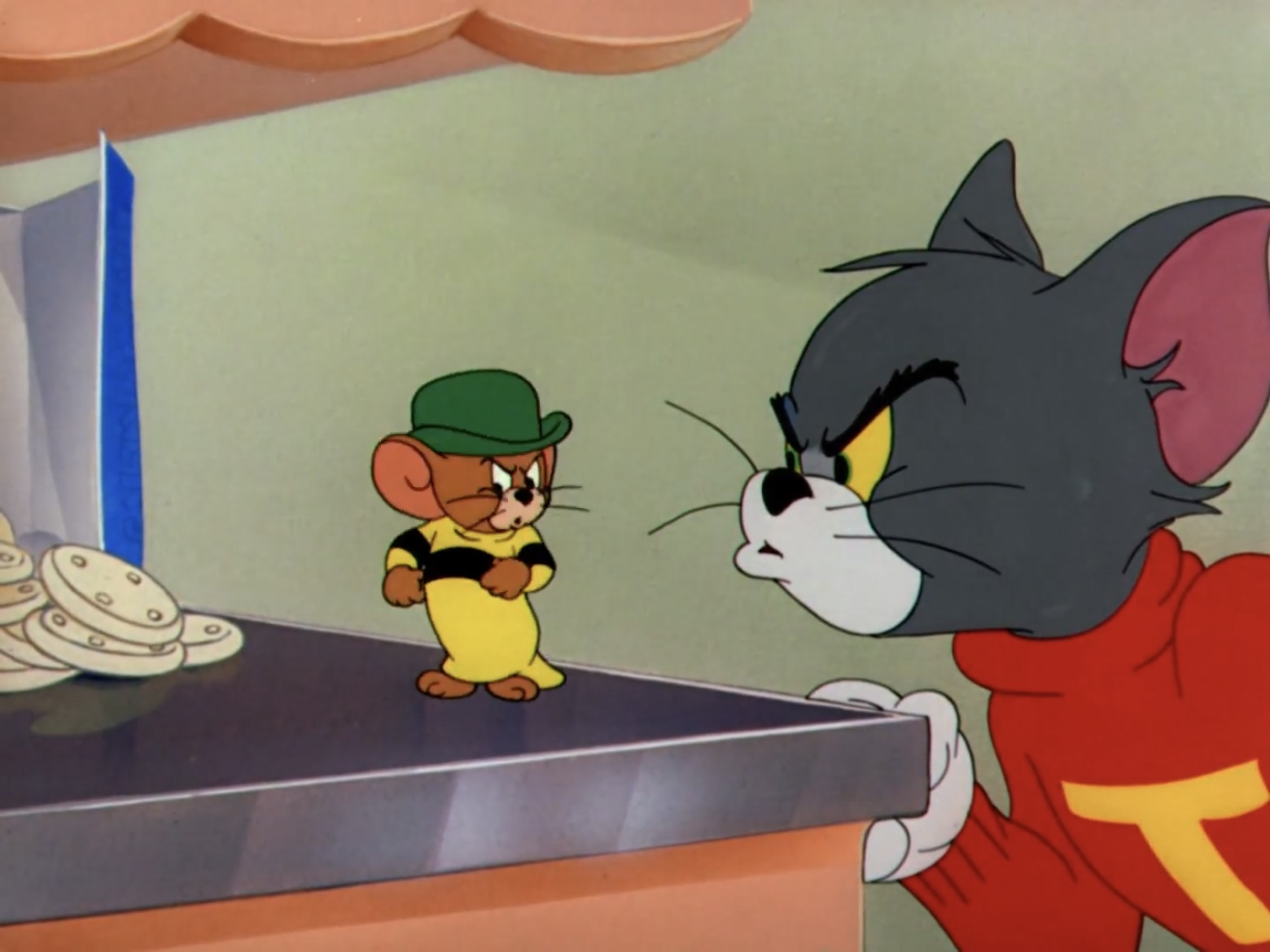The idea of Tom fighting another cat for Jerry was an idea the series would use very often. Sufferin' Cats was the first Tom and Jerry film to use this story.
In this film Tom and Jerry are once again fighting. Jerry runs away from Tom, until he runs into another cat. Jerry starts a feud between Tom and this other cat.
This is an excellent cartoon. It may not be one of the best Tom and Jerry films, but that is because the other cartoons are so good. William Hanna was often in charge of the timing of these cartoons and here you can see just how good he was at it by this time. The timing is just perfect here. Unlike in Dog Trouble and Puss N' Toots there are plenty of jokes along with the great timing. The jokes are very funny as well. The animation is fantastic and the facial expressions of the characters get quite a few laughs.
The animators on this film are Pete Burness, George Gordon, Kenneth Muse, and Jack Zander. All of who had worked on previous Tom and Jerry cartoons. This is the second cartoon in which they rightful receive screen credit (as well as Music director Scott Bradley). However Frank Graham who does the voice of the devil on Tom's shoulder does not receive any credit. It is worth noting however at this time no voice actor received on screen credit at any of the major Hollywood cartoon studios. Mel Blanc would break that unfortunate reality the next year by receiving credit for doing voices in Looney Tunes and Merrie Melodies cartoons (though the other voice artists for those series still received no credit).
-Michael J. Ruhland
Resources Used
Of Mice and Magic: A History of the American Animated Cartoon by Leonard Maltin.
http://www.imdb.com/title/tt0036399/?ref_=ttfc_fc_tt
In this film Tom and Jerry are once again fighting. Jerry runs away from Tom, until he runs into another cat. Jerry starts a feud between Tom and this other cat.
This is an excellent cartoon. It may not be one of the best Tom and Jerry films, but that is because the other cartoons are so good. William Hanna was often in charge of the timing of these cartoons and here you can see just how good he was at it by this time. The timing is just perfect here. Unlike in Dog Trouble and Puss N' Toots there are plenty of jokes along with the great timing. The jokes are very funny as well. The animation is fantastic and the facial expressions of the characters get quite a few laughs.
The animators on this film are Pete Burness, George Gordon, Kenneth Muse, and Jack Zander. All of who had worked on previous Tom and Jerry cartoons. This is the second cartoon in which they rightful receive screen credit (as well as Music director Scott Bradley). However Frank Graham who does the voice of the devil on Tom's shoulder does not receive any credit. It is worth noting however at this time no voice actor received on screen credit at any of the major Hollywood cartoon studios. Mel Blanc would break that unfortunate reality the next year by receiving credit for doing voices in Looney Tunes and Merrie Melodies cartoons (though the other voice artists for those series still received no credit).
-Michael J. Ruhland
Resources Used
Of Mice and Magic: A History of the American Animated Cartoon by Leonard Maltin.
http://www.imdb.com/title/tt0036399/?ref_=ttfc_fc_tt





